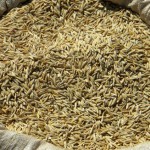Producers, Filmmakers optimistic over Adkia’s Green Screen
In a bid to foster the growing film industry, Adika Communications and Events Plc finalized the first ever filmmaker green screen in the country at a cost of over one million birr at its head office compound located around Mexico Square. The screen is planned to be operational at the beginning of January 2013.
Green screen is a filming solid color background that is used when recording. It is used to shoot scenes that are beyond human capacity such as jumping from a very high end, flying, animation characters, and so on.
It is usually made from a solid green or blue cotton, polyester or muslin, which are the type of fabrics that are easy to paint.
Currently Adika has green and blue screens and had been used in a couple of music videos for Kuku Sebsebe and Abi Lakew for a trial, according to Ashenafi Zeleke, general manager of the company.
The fabrics are designed to scatter light rays that make the setting easy to light in order to minimize the hassle of finding the right intensity of light and the correct position of lighting equipment to provide lighting while shooting, Ashenafi says.
A sister company of the well-known tour and travel business that is its namesake, Adika communications was established in November 2010 by three shareholders, Awad Mohammed, managing director of Adika Tour and Travel; David Kirba, and Ashenafi.
But, while still being Adika Tour and Travel, it was also involved in sponsoring a lot of activities in the entertainment sector, including movies and concerts. It handled Teddy Afro’s concerts here in Addis Abeba as well as abroad and many more artists including Gossaye Tesfaye and Aster Awoke.
“The company is a fan of entertainment, so we have been supporting the sector in a huge way”, Ashenafi told DireTube.com.
In its involvement in the industry Adika has observed the gap in film making especially the techniques used while shooting and this has inspired it to install the screens, according to Ashenafi.
In addition to sponsoring and providing cars and other necessities for movie shootings, the company also counsels and overviews movie scripts and music lyrics through its committee called the Adika Advisory Board, composed of individuals from different backgrounds: writers, musicians, arrangers, journalists, and lyricists.
“We currently have over 10 movie scripts that are under discussion and when the overview is complete we will immediately start shooting using the green screen.” Ashenafi states.
So far, Ethiopian films leaps and bounds to grow because of three major challenges; infrastructure, educated manpower and equipments, according to Thomas Getachew, film producer, also owner and general manager of Tom Video Productions. It is a company known for editing, videotaping, pre and post production services for the past thirty years.
“Out of these three major challenges, the fact that we never had green screen for action or scientific films it has been difficult to make movies of a genre different from comedy and romantic comedy and even with these types of movies to shoot different scenes.” Thomas told DireTube.com.
Since the background colors are mostly one that can be removed easily, bright green and bright blue are usually used because these colors are the furthest away from the color of skin. This would make Adika’s new screen one of the problem solvers of infrastructural problem of the movie industry, explains the Thomas.
“This would open doors for others to contribute to the industry and start to open editing studios, studios for introduction setups as well as separate sound and video studios like cinema industries of other film industries” he said.
Currently, according to data from the Ethiopian Filmmakers Association (EFIMA), over 200 films have been produced over the last five years, with many more on the way.
However, Ethiopia’s cinema industry is far behind Nollywood of Nigeria. Nigerian filmmaking grew quickly in the 1990s and 2000s to become the second largest film industry in the world in terms of the number of annual films produced, placing it ahead of the United States but behind the Indian film industry.
Nigeria has a 250 million-dollar movie industry, churning out some 200 videos for the home video market every month, according to the United Nations Scientific Cultural Organisation Institute for Statistics (UNSCOIS).
Green screen effects to the movies would give an edge in terms of offering more service to the quality of the movies, says Serawit Fikre, a filmmaker and owner of Serawit Multimedia, a production company, for the past eight years.
According to his explanation, filmmakers have been facing restrictions in writing scripts because of the lack of production equipment and challenges in shooting scenes in different places costing them time and money.
Shortage of equipments led him and his crew to vacate a movie shooting titled “Jawisaro” with lots of visual effects that can only be done on green screens. Despite so many shooting and editing the movie still could not represent the script, he states.
“Adika’s involvement in the industry is bringing a difference in various ways and this is a huge investment in terms of giving freedom to filmmakers, writers, producers as well as everyone involved in the industry” Serawit explains.
“After seven years of trying for ‘Jawisaro’, I think its time might be now” Serawit said.
Adika is currently aggressively working towards achieving the establishment of a separate company to handle the communications, entertainment, and event management and marketing activity.
By HADRA AHMED
DireTube Reporter





![God Answered Ethiopian Woman Prayer to Get U.S. Visa [Satire]](https://www.ethiopianopinion.com/wp-content/uploads/2014/04/no-150x150.png)

















![Addis Ababa Light Train Project Progress [Picture + Video] Addis Ababa Light Train Project Progress [Picture + Video]](https://www.ethiopianopinion.com/wp-content/plugins/top-10/timthumb/timthumb.php?src=http%3A%2F%2Fwww.ethiopianopinion.com%2Fwp-content%2Fuploads%2F2014%2F06%2F568236dd-150x150.jpg&w=&h=&zc=1&q=75)




Join Conversations